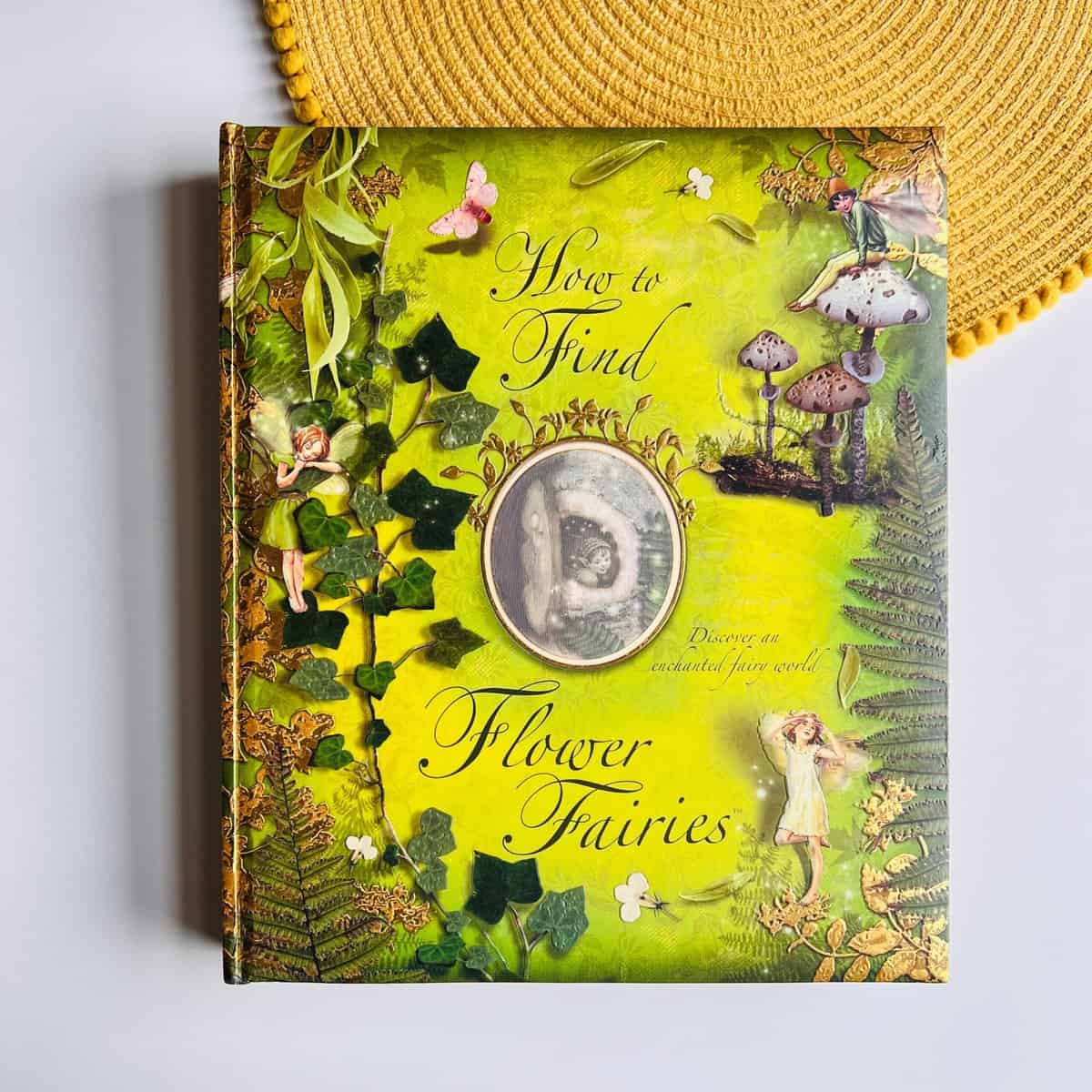How to Find Flower Fairies: A Magical Guide for Parents
Welcome, dear parents, to a whimsical journey through the enchanting world of flower fairies! Imagine twinkling lights amidst petals and laughter carried by the breeze. Together with your children, you’re about to embark on an adventure to discover these elusive and delightful creatures. This guide is sprinkled with tips and tricks to help you find and appreciate the magical wonder of flower fairies right in your own backyard or local park.
Understanding the World of Flower Fairies
Before we set out on our fairy-finding voyage, let’s take a moment to understand what flower fairies are. According to folklore, flower fairies are tiny, ethereal beings that care for plants and flowers. Each fairy is said to be connected to a specific flower and is responsible for its well-being. These fairies are shy and hidden, so spotting them is all about knowing where and how to look.
Best Time to Spot Flower Fairies
Timing is everything! To catch a glimpse of these fleeting sprites, aim for dawn or dusk, when the world is quiet and the fairies are most active. The soft light during these times is also believed to reveal the delicate shimmer of a fairy’s wings.
Creating a Fairy-Friendly Garden
Step 1: Choosing Fairy-Attracting Flowers
- Select plants and flowers that are native to your region, as these are most likely to attract local fairies.
- Consider planting flowers that bloom at various times throughout the seasons to ensure a year-round fairy presence.
- Include a mix of colors, shapes, and sizes to create an inviting environment, such as lavender for its scent, daisies for playfulness, and sunflowers for their height.
Step 2: Water Features and Fairy Baths
- Add a small water feature, like a birdbath or fountain, as fairies are often fond of water.
- Keep the water clean and replenish it regularly to maintain a healthy and inviting habitat.
Step 3: Natural Elements and Fairy Homes
- Provide natural materials such as twigs, leaves, and stones to encourage fairy construction.
- Consider adding a fairy house to your garden. You can make one from natural materials, or find ready-made fairy dwellings at your local craft store.
Tips for a Magical Fairy Quest
Adventures await! Here are some tried-and-true tips for your very own family fairy quest:
- Patience is Key: Fairies won’t appear if you’re in a hurry. Sit quietly and let the magic come to you.
- Use Your Senses: Be on the lookout for the scent of flowers, rustling leaves, or tiny movements—a sign that fairies may be near.
- Fairy Circles and Paths: Look for circular patterns in the grass or small, meandering paths. These may be signs of fairy rings and trails.
- Magic in the Mundane: A pile of petals or an arrangement of leaves might seem ordinary, but to the keen-eyed believer, they scream fairy activity!
- Photographing Your Discovery: If you think you’ve spotted a fairy, try capturing the moment with a camera. Fairies are camera-shy, so it’s rare to photograph one, but you might just snap a hint of fairy magic!
Embarking on a search for flower fairies is not just about sighting these mystical beings—it’s about cultivating wonder, spending quality time together, and fostering a love for nature in your children. Even if you don’t spot a fairy on your first try, the real treasure lies in the memories you create and the stories you’ll tell.
Stay tuned for more insights as we continue this playful adventure. Next, we’ll discuss crafting your very own fairy garden tools, engaging in fairy lore, and the importance of nature conservation when inviting these mystical creatures into your world. Remember, finding flower fairies is all about believing in the magic of the small things and knowing that every garden has the potential to be a haven for these elusive, delightful sprites!

How to Find Flower Fairies: A Magical Guide for Parents
Welcome, dear parents, to a whimsical journey through the enchanting world of flower fairies! Imagine twinkling lights amidst petals and laughter carried by the breeze. Together with your children, you’re about to embark on an adventure to discover these elusive and delightful creatures. This guide is sprinkled with tips and tricks to help you find and appreciate the magical wonder of flower fairies right in your own backyard or local park.
Understanding the World of Flower Fairies
Before we set out on our fairy-finding voyage, let’s take a moment to understand what flower fairies are. According to folklore, flower fairies are tiny, ethereal beings that care for plants and flowers. Each fairy is said to be connected to a specific flower and is responsible for its well-being. These fairies are shy and hidden, so spotting them is all about knowing where and how to look.
Best Time to Spot Flower Fairies
Timing is everything! To catch a glimpse of these fleeting sprites, aim for dawn or dusk, when the world is quiet and the fairies are most active. The soft light during these times is also believed to reveal the delicate shimmer of a fairy’s wings.
Creating a Fairy-Friendly Garden
Step 1: Choosing Fairy-Attracting Flowers
- Select plants and flowers that are native to your region, as these are most likely to attract local fairies.
- Consider planting flowers that bloom at various times throughout the seasons to ensure a year-round fairy presence.
- Include a mix of colors, shapes, and sizes to create an inviting environment, such as lavender for its scent, daisies for playfulness, and sunflowers for their height.
Step 2: Water Features and Fairy Baths
- Add a small water feature, like a birdbath or fountain, as fairies are often fond of water.
- Keep the water clean and replenish it regularly to maintain a healthy and inviting habitat.
Step 3: Natural Elements and Fairy Homes
- Provide natural materials such as twigs, leaves, and stones to encourage fairy construction.
- Consider adding a fairy house to your garden. You can make one from natural materials, or find ready-made fairy dwellings at your local craft store.
Tips for a Magical Fairy Quest
Adventures await! Here are some tried-and-true tips for your very own family fairy quest:
- Patience is Key: Fairies won’t appear if you’re in a hurry. Sit quietly and let the magic come to you.
- Use Your Senses: Be on the lookout for the scent of flowers, rustling leaves, or tiny movements—a sign that fairies may be near.
- Fairy Circles and Paths: Look for circular patterns in the grass or small, meandering paths. These may be signs of fairy rings and trails.
- Magic in the Mundane: A pile of petals or an arrangement of leaves might seem ordinary, but to the keen-eyed believer, they scream fairy activity!
- Photographing Your Discovery: If you think you’ve spotted a fairy, try capturing the moment with a camera. Fairies are camera-shy, so it’s rare to photograph one, but you might just snap a hint of fairy magic!
Embarking on a search for flower fairies is not just about sighting these mystical beings—it’s about cultivating wonder, spending quality time together, and fostering a love for nature in your children. Even if you don’t spot a fairy on your first try, the real treasure lies in the memories you create and the stories you’ll tell.
Stay tuned for more insights as we continue this playful adventure. Next, we’ll discuss crafting your very own fairy garden tools, engaging in fairy lore, and the importance of nature conservation when inviting these mystical creatures into your world. Remember, finding flower fairies is all about believing in the magic of the small things and knowing that every garden has the potential to be a haven for these elusive, delightful sprites!
Five Things Parents Should Know in Preparing for How to Find Flower Fairies
As you prepare to delve into this enchanting activity with your little ones, there are five key things every parent should keep in mind:
- Embrace the Power of Imagination: The search for flower fairies is as much about imaginative play as it is about gardening and exploring nature. Encourage your children to envision what fairies might look like, how they might live, and the wonders they could perform, making the whole experience more vivid and engaging.
- Engage with Nature: This magical quest is a perfect opportunity to teach children about the importance of plants, insects, and the ecosystem. As you search for fairies, explain the roles different flowers and plants play in the health of our environment.
- Incorporate Storytelling: Fairy tales and stories are a splendid way to make your search more meaningful. Read books about fairies together and create your own fairy stories inspired by the nature you see around you.
- Consider the Weather: While fairies are often associated with sunny, bright days, they can be found in all weather conditions. Dress appropriately for your outdoor adventures and embrace the elements, whether it’s a sunny day or a misty morning.
- Practice Respectful Exploration: In your search for flower fairies, it’s crucial to teach children to respect nature. This includes not picking flowers unnecessarily, disturbing habitats, or leaving trash behind. Show your children how to explore with care, leaving the environment as untouched as possible for the fairies—and other creatures—who call it home.
Armed with these tips and a heart full of excitement, you and your family are well on your way to finding the magic and delight of flower fairies. So grab your fairy field guide, put on your explorer’s hat, and open your senses to the hidden wonders that await. The fairies may be shy, but with a little bit of faith, patience, and adventure, you may just discover a whole new world that’s been blossoming right under your noses!
See more great Things to Do with Kids in New Zealand here. For more information see here
Disclaimer
The articles available via our website provide general information only and we strongly urge readers to exercise caution and conduct their own thorough research and fact-checking. The information presented should not be taken as absolute truth, and, to the maximum extent permitted by law, we will not be held liable for any inaccuracies or errors in the content. It is essential for individuals to independently verify and validate the information before making any decisions or taking any actions based on the articles.




